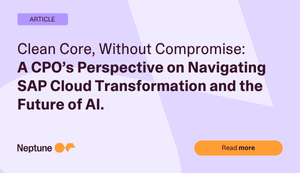SAP moved to resolve a European Commission investigation into its on-premise ERP maintenance and support policies by offering a package of commitments aimed at increasing customer choice, easing contract restrictions, and reducing financial barriers for organizations that seek alternatives to SAP support providers. The Commission opened a formal probe in September, expressing concerns that certain SAP practices may have limited customers’ ability to mix support options or terminate services for unused licenses, potentially violating EU competition laws.
According to the Commission, SAP may have restricted competition by requiring uniform support levels across a customer’s entire estate of on-premise ERP products, extending lock-in periods for maintenance contracts, blocking termination of support for shelfware, and imposing reinstatement or back-maintenance fees that could discourage customers from leaving and later returning to SAP support.
To address these concerns, SAP offered a set of remedies that, if accepted and made binding, would apply globally for a period of 10 years. The commitments include:
- Allowing customers to split their systems into parts so they can choose different support providers or discontinue SAP support for specific segments, including unused licenses.
- Expanding access to single-metric contracts, giving customers more flexibility in how maintenance fees are calculated, and enabling shelfware to be placed into a non-supported system partition.
- Clarifying and limiting initial contract terms, ensuring SAP does not restart the mandatory support period when customers acquire additional licenses.
- Abolishing reinstatement fees and reducing back-maintenance fees to 50% of what customers would have paid — with a six-month cap — and waiving them entirely for certain aging products.
SAP emphasized that it views its practices as consistent with industry norms but supports the process and expects no material financial impact as the case concludes. “These longstanding policies reflect standard practice across the enterprise software industry,” SAP said in its response, adding that the Commission’s concerns “do not relate to or affect our cloud offerings.”
Analyst view: Impact likely muted as SAP accelerates cloud shift
Robert Holland, Vice President and Research Director at SAPinsider, said the commitments address legitimate concerns about customer flexibility in the on-premise market, but the real-world impact on SAP’s long-term revenue picture is likely to be limited.
“The thing to note here is that this investigation and the commitments apply to on-premise maintenance revenue of SAP's ERP solutions,” Holland said. “Given that SAP is moving away from on-premise solutions, and is actively working to decrease its sales of traditionally licensed software, this is likely to have a reduced impact on SAP's overall revenue.”
Holland pointed out that software support revenue — €2.565 billion last quarter — has been declining by roughly €100 million per quarter as SAP shifts customers to cloud offerings. Meanwhile, traditional software license revenue totaled only €161 million in Q3. “That number for software support revenue is going to continue to decline,” he said, noting that ERP represents only part of that total and SAP does not provide a more detailed breakdown.
Even if customers theoretically gain more latitude to choose third-party support providers, Holland cautions that the practical alternatives remain limited. “While there are organizations like Rimini Street that offer these services," he said, " the lack of access to SAP patches and updates can be significant when so many high-priority security issues are being found and patched on a regular basis.” For many customers, this reality keeps SAP support the default option, regardless of regulatory changes.
What comes next
The European Commission has opened a one-month consultation window for industry feedback before deciding whether to accept SAP’s commitments and close the investigation. If the commitments become binding, compliance will be monitored by an independent trustee.
The case marks one of the first major EU competition proceedings focused specifically on enterprise software support practices. While the investigation speaks to the legacy on-prem market, its outcome could influence how major vendors frame customer rights and contractual flexibility as the cloud ERP migration wave continues.
What This Means for SAPinsiders
Greater flexibility reduces support lock-in risk. Technology leaders will have more room to evaluate third-party maintenance options without being forced into all-or-nothing support decisions. This shift allows CIOs and IT procurement teams to align support models more closely with application usage and business value. Over time, this can reshape how enterprises negotiate multi-year contracts across mixed SAP and non-SAP estates.
Vendor evaluation criteria must be sharpened. SAP customers considering alternative maintenance providers should assess patch access, security coverage, update frequency, and roadmap alignment before switching. Organizations that attempt third-party support for aging ERP landscapes may discover integration and security gaps when high-priority vulnerabilities emerge. To avoid similar pitfalls, leaders should require proof of incident response effectiveness, compatibility testing processes, and examples of customers operating mission-critical systems under comparable conditions.
Cloud migration changes the enterprise support paradigm. Unlike traditionally licensed software where the maintenance fees are focused on the ability to access patches, updates, and services and support teams, cloud-based software is normally subscription-based. This means that there are no options to discontinue maintenance if a customer wants to keep using software. While there can be a significant benefit in terms of administrative overhead compared to on-premise systems, this is offset by the need to renew contracts on a regular basis. With most organizations accelerating their transition to the cloud, organizations must understand how these changes will impact their ongoing maintenance needs.








